What’s New in Robotics? 05.11.2021

Posted on Nov 05, 2021 10:32 AM. 8 min read time
News briefs for the week take a look at robot COVID fighters training for the upcoming Beijing Olympics (100 days to go!) and another robot that monitors Olympic water for safety, then it’s off to see how cobots deal with lost & found tasks, followed by high-rise, window-cleaning robots, then how robot laborers automate leaf pruning of tomato leaves, and robot grape harvesters that make wine taste better (yes, taste better!).

Robots to keep Winter Olympics safe
The Winter Games are 100 days off. The massive Wukesong Arena is getting ready to host the ice hockey events for February’s Beijing Winter Olympics 2022 (February 4 to 20). For 16 days, over 30 robots will be deployed to help keep the players, staff, and thousands offans safe from COVID.

Shenzhen-based Kangfeng Air Purification Technology Company’s large mobile air purifiers will support the Beijing Olympic Games.
Additionally, mobile robots will be used to sanitize the air by spraying a disinfecting fog capable of treating 387 square feet with each spray; and carries enough disinfectant to cover 10,000 square feet with each deployment (see video).
Another robot named Little White, is equipped with facial recognition sensors that will scan the venue for fans not wearing a mask and remind them to do so.
Robots monitor Olympics’ water supply
One of most important water sources for the Beijing Olympics is Guanting Reservoir (built in 1951), located about 65 miles from Beijing. Without a secure water supply, it would be impossible to carry on the Games’ two-week program. So early on, Hefei Institutes of Physical Science (HFIPS) has had its unmanned surface vehicle monitoring the reservoir’s water quality.
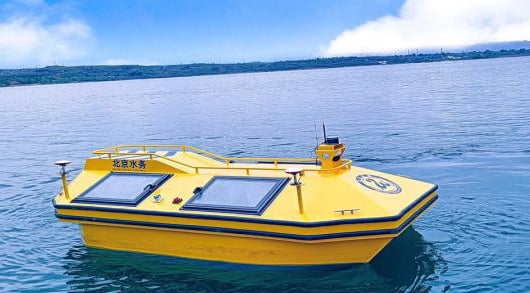 As the 2022 Beijing Olympic Winter Games approach (February 2022), it's urgent to secure the water quality of The Guanting Reservoir, one of the water resources critical for the Games.
As the 2022 Beijing Olympic Winter Games approach (February 2022), it's urgent to secure the water quality of The Guanting Reservoir, one of the water resources critical for the Games.
"We have been working on this project for more than three years," said Dr. Yu Daoyang. "The existing surface water monitoring system in China is mainly online monitoring and manual sampling for laboratory analysis.”
The new control technology is precise and fast, especially as it is 5G enabled, and ensures rapid, in-situ and online monitoring for the unmanned vessel, even in complex environments.
Made of high-quality stainless steel to prevent corrosion, the autonomous surface vessel is about 4 meters long by 2 meters, is battery powered and can operate for more than eight hours.
"This is the largest unmanned, water-quality monitoring surface vessel in China, " Dr. YU explained, "with the most complete functions and advanced intelligent software."
Cobot-style lost & found
Imagine a pick & place cobot has just filled a shipping carton with twenty-five different items, when suddenly the customer logs on to the ecommerce retailer to cancel one of the items. Good customer service says to get the item out of the box before it’s shipped to the 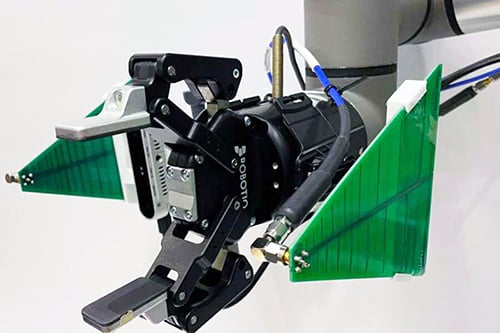 customer.
customer.
Pick and place robots are commonly used in modern manufacturing and warehouse environments; and, as their name implies, they pick up objects and quickly place them into packaging, shipping cartons or at other locations for further processing.
Could the same pick & place robot go back into the shipping carton and retrieve the cancelled merchandise? Not really: pick & place is a one-way trip. Well, that is, until now.
MIT researchers, using a cobot arm with a camera and radio frequency (RF) antenna attached to its gripper, have solved the problem.
The key is the use of inexpensive RFID tags ($.03 each). RFID or radio-frequency identification tags contain an integrated circuit that can identify itself to an antenna and tag reader.
RFusion, as it’s called by the researchers, “is a robotic system that can search for and retrieve RFID-tagged items in line-of-sight, non-line-of-sight, and fully-occluded settings. RFusion consists of a robotic arm that has a camera and antenna strapped around its gripper.” In addition, “novel reinforcement-learning …uses the fused RF-visual information to efficiently localize, maneuver toward, and grasp target items.”

High-rise, window-cleaning robots
Even one avoidable death is too many. On average, data from the International Window Cleaning Association showed that one high-rise window cleaner was killed annually over the past four years.
Osmo, the high-rise, window-cleaning system from Tel Aviv-based Skyline Robotics, is answering the call to the obvious need for safety 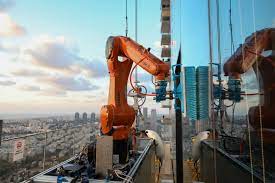 via automated window cleaning…plus, speed and efficiency.
via automated window cleaning…plus, speed and efficiency.
Ozmo, says the startup developer of the technology, “is an automated window-cleaning robot that maps building surfaces to clean windows of different configurations and avoid obstacles without human guidance.”
The system combines artificial intelligence, machine learning, and computer vision with a robotic arm designed by KUKA. The robot system uses force sensors to measure how fragile glass is, and “AI helps the system remain stable, even in gusty conditions. The system utilizes lidar, scanning a building's façade, memorizing surfaces and planning a cleaning path -- which it continually updates.”
Advancements engineered by KUKA include on-the-fly control of the KUKA robots in terms of pressure applied during the cleaning process, as well as the ability to compensate for a moving scaffolding due to weather and changing architectural building features."
With the window-cleaning industry at $40 billion annually and with 74% of all window cleaners in the US over the age of 40, robots appear to be the up-and-coming replacements for people high up on scaffolding.
Automated leaf pruning for tomato plants
The world loves tomatoes. So much so, over 180 million metric tons are harvested annually, with China’s 33% share by far the largest worldwide.
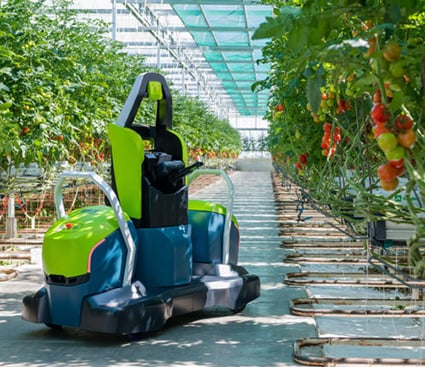 Although necessary for photosynthesis, a tomato plant’s leaves use up a lot of energy that could otherwise be used for fruit production. Pruning the foliage is best for fruit development, however, it’s backbreakingly slow and tedious. A robot to do the pruning would be ideal for speed, efficiency and optimum fruit growth for millions of acres…and make stoop-labor, manual picking unnecessary.
Although necessary for photosynthesis, a tomato plant’s leaves use up a lot of energy that could otherwise be used for fruit production. Pruning the foliage is best for fruit development, however, it’s backbreakingly slow and tedious. A robot to do the pruning would be ideal for speed, efficiency and optimum fruit growth for millions of acres…and make stoop-labor, manual picking unnecessary.
Enter, Dutch company Priva and its automated Kompano leaf-cutting robot, which, according to Priva, is “the first robot worldwide that provides users with an economically viable alternative for de-leafing tomato crops by hand.”
Designed to de-leaf tomato plants only in greenhouses, Kompano is a battery-powered robot that can operate on a 24/7 basis. The 6-foot by 2-foot auto-pruning robot weighs 900 lbs. and is 85% effective at pruning 2.5 acres per week.
A series of 50 Kompano robots are in production (no pricing yet available).
Robots as wine connoisseurs!
“New research at UC Davis is showing robots can help replace manual laborers and even change the way wine tastes (for the better!).”
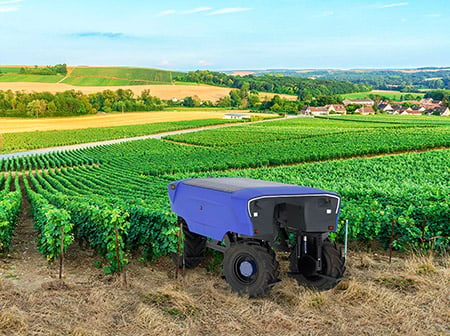 And as for the cost of robot vs. manual: “We’re going from $1.20 to about 12 to 22 cents per vine.”
And as for the cost of robot vs. manual: “We’re going from $1.20 to about 12 to 22 cents per vine.”
Wine growers, traditionally averse to machines harvesting their grapes, are turning to automated grape harvesting in growing numbers.
In Italy, “last year was the worst labor shortage of his half-century career in wine. Use of harvesting machines among the group’s members increased 20% this year in response.”
In California, with a wine industry threatened by pests, drought, and wildfires, now adds a lack of labor to the ever-growing list of worries.
“Our estimate is we have two-thirds less people working in wine grapes now,” said Prof. Kaan Kurtural, of the UC Davis Viticulture and Enology Department.
Researchers say that the pressure is on to stabilize all the uncertainties of wine growing, and that automation and robotics and artificial intelligence are providing that comfort zone.


Leave a comment